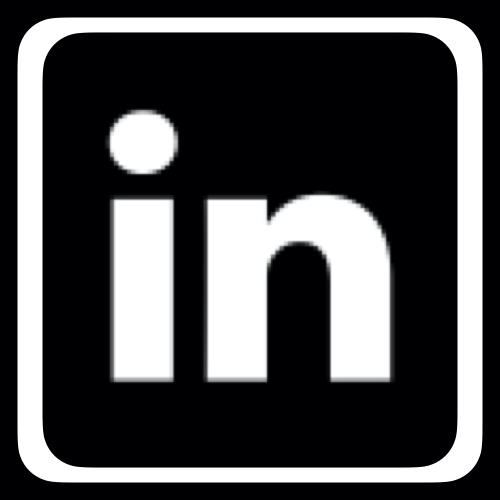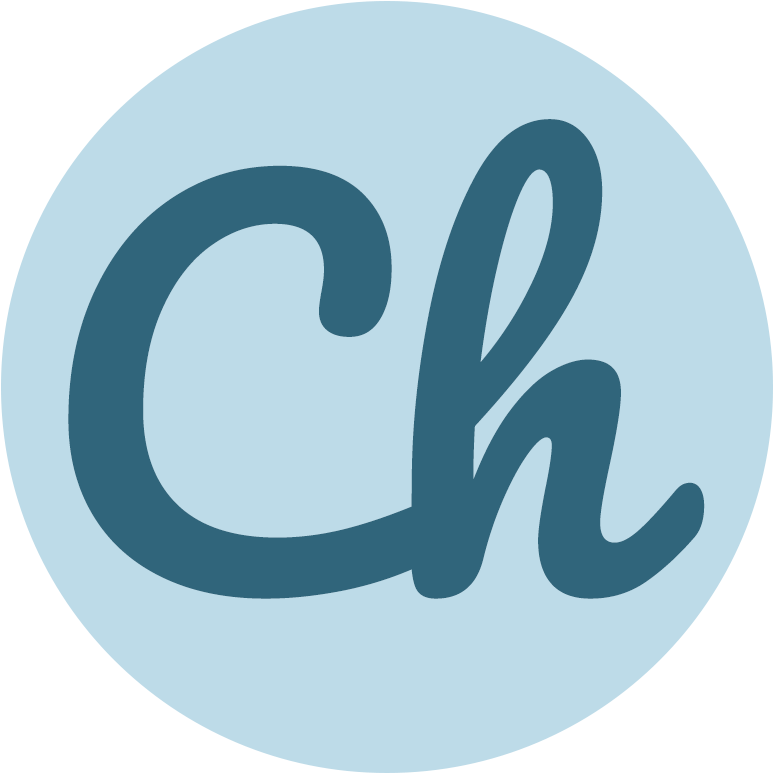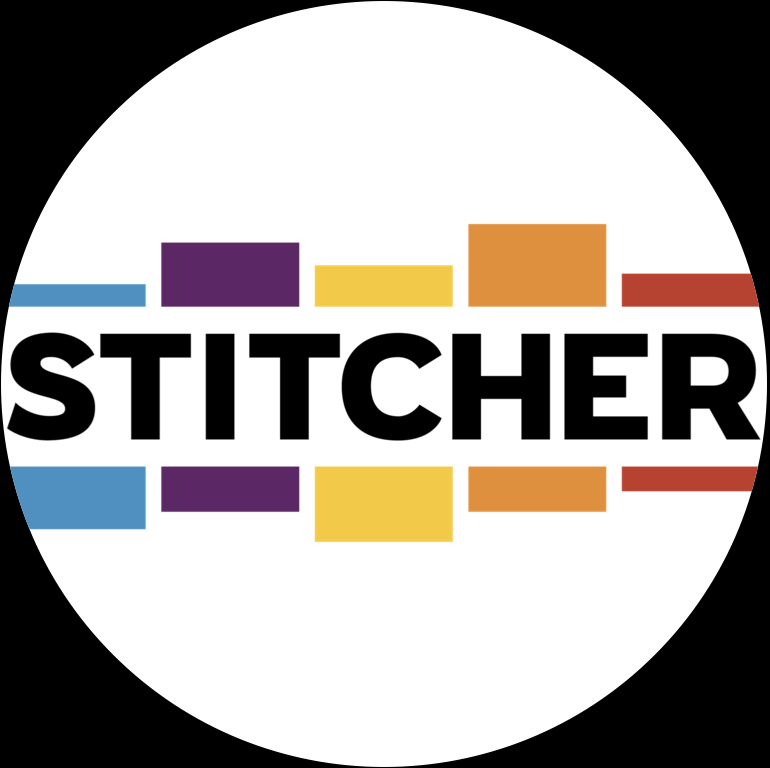About this episode
In this episode of the Dr. GPCR Podcast, I spoke to Dr. Aaron Sato from Twist Biopharma, a vertical within Twist Bioscience. Aaron is currently the Chief Scientific Officer and VP of Protein Engineering. He earned his Ph.D. at the Massachusetts Institute of Technology, where he studied MHC class II structure-function relationships. His path led him to work in an industry where he assumed various responsibilities and roles in the antibody space. Aaron has a proven track record as a biologics leader as he led teams to discover and develop novel first-in-class antibody therapeutics. Dr. Sato published over 30 peer-reviewed papers and contributed to 40 issued patents in the antibody space.
During our time together, Aaron and I discussed how using Twist Bioscience’s proprietary technology to manufacture DNA at a scale, the team saw an opportunity to tackle the challenge of identifying novel functional antibodies targeting GPCRs by incorporating these natural binding partners into Twist’s antibody library design.
We’d like to extend a special thanks to Twist Biopharma for sponsoring this episode of the Dr. GPCR podcast.
Dr. Aaron Sato on the web
Listen and subscribe
Podcast transcript
Dr. Yamina Berchiche 0:01
So, hello everybody. I'm Yamina Berchiche, founder of Dr. GPCR, and welcome to another episode of the Dr. GPCR podcast. Today I have the pleasure and the honor to talk with Dr. Aaron Sato, he is the CSO currently at Twist Biopharma. Hi, Aaron. How are you?
Dr. Aaron Sato 0:16
Hi Yamina, how are you?
Dr. Yamina Berchiche 0:17
Good. Thank you. Thank you for being here today.
Dr. Aaron Sato 0:20
Oh, my pleasure.
Dr. Yamina Berchiche 0:21
Um, so as I mentioned a minute ago, so you're the CSO at Twist Biopharma. Can you tell us a little bit more about your career and how you got to where you are today?
Dr. Aaron Sato 0:32
Sure. Um, so going back to my graduate work, I graduated from MIT in the lab of Lauren Stern is a crystallographer in the area of working on MHC class two crystal structures. So I got a really firm, great experience and working with looking at structure-function relationships around meeting receptors, and then what transitioned into my very first job which is Dyax, which is a synthetic antibody phage display company. So I got a really broad experience of discovering antibodies using phage display and then I went on to a number of other smaller biotech companies as I transitioned to California, so I worked for OncoMed. So a cancer stem cell company focused on using biologics to address cancer stem cells, worked at Sutro Biopharma where they had a unique cell-free platform for making site-specific antibody-drug conjugates. And then I transitioned to a couple of other roles. I led the Antibody Center at Lake Pharma which is one of the largest biologic CRO’s in the United States. And then finally, I landed at Twist where I headed up the Twist Biopharma vertical at Twist. So that group is focused on utilizing all the fantastic unique products of Twist to help pharma and biotech companies discover as well as optimize antibodies and I've been at Twist for two years now.
Dr. Yamina Berchiche 1:57
Wow. Fantastic. So, a bunch of roles that all prepare you at the end of the day to assume this new role at Twist.
Dr. Aaron Sato 2:08
Yeah I mean I always say that you know my career has always been leading up to this fantastic role that I have a twist now which is basically utilizing synthetic DNA libraries and utilizing phage display to discover antibodies against all kinds of different targets so it was really a fantastic and perfect role for me to step into.
Dr. Yamina Berchiche 2:27
Oh great. So, maybe my audience is not aware of who Twist Biopharma is or not even aware who Twist is and can you tell us more about the difference between Twist Biopharma and Twist Bioscience and now what do you do?
Dr. Aaron Sato 2:43
Sure, so again, Twist Biopharma is a division within Twist Bioscience, a parent company that has a unique silicon platform where they can basically synthesize large pools of individual oligos up to 300 base pairs in length. And they can use those pools of oligos to make all kinds of different unique products. So clonal genes are one of our products. So, you can go online order any DNA up to five KB cloned to any vector you wish. And that's a large revenue-generating business. For us, we have other products. In the NGS space, we're using pools of oligos for sample prep, ahead of NGS sequencing. And then we've created two additional verticals in the company Twist Biopharma being one on which I'll expand on a second and then the other is data storage. So, I oversee the Twist Biopharma division of the company. And that group is focused on, as I said, using another product I didn't mention, which is our DNA library technology where we can use these pools of oligos to make high quality and diverse DNA libraries. We use that same platform to create a whole suite of different antibody phage display libraries. That's key and central to our mission, which is basically creating those libraries, broadly licensees and licensing them outward to other biotech and pharma companies, as well as doing funded research projects on behalf of those companies to help them discover as well as optimize antibodies. And we have a whole platform for doing antibody optimization as well. That's called TAO, which stands for Twist Antibody Optimization and again utilizes that same library platform to help others take an initial antibody sequence and improve upon it and potentially also humanize it as we do that.
Dr. Yamina Berchiche 4:36
Wow. I did scroll look around on the Twist Biopharma and Twist Bioscience websites and I think the technology of being able to print DNA at such a high yield and have all these libraries. It's kind of revolutionary, and it's really cool technology.
Dr. Aaron Sato 4:52
Yeah, I mean, one, one differential that, you know, it's been great for me as an antibody engineer is that in the past when we've made synthetic libraries, we've typically had to use degenerate oligos. To do that. So, either all goes that use mixtures of nucleotides or trying nucleotides to encode for the diversity that you see in the CDR lips of an antibody. We were using our silicon-based platform, we don't have to do that we could actually make pools of individual discrete sequences and all the pools and then use that as the input to then create these libraries. And that's like that gives us a lot more control and also yields higher quality libraries in the end.
Dr. Yamina Berchiche 5:30
Wow, that's fantastic. Where did the idea of creating Twist Biopharma come from?
Dr. Aaron Sato 5:37
Yes, so the idea of creating Twist Biopharma came from our founders, so Emily, who's my boss, CEO of the company, as well as some of the other founders on the executive team came up with the idea of creating the two verticals I talked about. So Twist Biopharma as well as the data storage verticals. And so they then sought out people to come in internally to kick off those new verticals. So, again, the idea was really this idea of not just selling custom DNA products, but also selling the application of them. And so that's why we see the Twist Biopharma, as well as even data storage, is kind of the next evolution of creating even higher value products derived from DNA.
Dr. Yamina Berchiche 6:20
And we haven't, it's a GPCR focused podcast. Can you tell us a little bit more about the storage? The other division of a Twist? Yes, yeah.
Dr. Aaron Sato 6:30
Yeah. Again, it's not my expertise. But it's this idea that you can use DNA for long term data storage. So, as you know, you know, DNA is one of the most rugged materials that nature ever created. So, in the fact that you, for example, you can dig up, you know, fossils and collect their DNA and understand, like, what organism they came from. So the idea is that rather than coding data in kind of ones and zeros on silicon, can you actually encode for data in the ATG, G's and C's of DNA, and then take advantage of that rugged nature of DNA, and so synthesize it, and then if you need to down the road actually read it out, but it's more of long term storage rather than the kind of like short term read-write stores you might think about in terms of a hard drive.
Dr. Yamina Berchiche 7:20
Oh, truly revolutionary. Definitely.
Dr. Aaron Sato 7:23
Yes. Super cool.
Dr. Yamina Berchiche 7:25
It does sound really cool. So, as I mentioned, it's a GPCR focus podcast. Where do GPCRs come into play in Twist Biopharma's mission?
Dr. Aaron Sato 7:37
Um, you know, again, I always say silicon, synthetic antibody phage display libraries are actually best used for really difficult to drug targets because, you know, if you had an easy target, you might want to just kind of use the more traditional antibody discovery technologies like hybridoma or all the other can more mainstream technologies but so if you think about it, Like, what are the most difficult targets out there that are difficult, you're aggressive biologics? Certainly, GPCRs are for now, first and foremost on everyone's mind. So, and, as we know, you know, almost all the good majority of the validated targets out there are directed against GPCRs. But they're mostly drugged by small molecules. So, we had this idea of, again, applying it to a class of targets that are difficult to drug, but use its synthetic antibody phages, to leverage, to address them. And so that's where this idea of target GPCRs came from. And we wanted to take advantage of our unique way of generating libraries using all the polls to create a library that was kind of unprecedented in the industry, in terms of addressing the specific class of targets.
Dr. Yamina Berchiche 8:49
And the goal is to be able to generate and to antibodies targeting any GPCR that is that we know at least the structure for or Do you or Is adjust or how do you start out? What's the starting material in order to be able to generate an antibody?
Dr. Aaron Sato 9:05
Yeah, so our very first library came from this idea that you could encode for specific GPCR body motifs and so the heavy chain SR three have an antibody structure. And so, we created a fully human synthetic antibody phage display library where we basically gathered all the known motifs that are known to bind to GPCR. So, motifs derive from protein, protein ligands, protein-peptide ligands, maybe even in some cases, even antibodies that are known to binary GPCRs. And we created again, a very large oligo pool that encoded for all these different motifs, and then inserted it into the top of the heavy chain CDR three of this library, so I call it a motif directed library. And it's basically rich in things that bind to GPCRs. And so, you know, ideally, what we found is it's very straightforward to find antibodies, whereas some of the motifs derived from those specific GPCRs are in the library. And we actually have a really nice example where we've done that with GLP one receptor, we also find that it can also be used to drug other targets that maybe don't bind proteinaceous ligands or even in some cases that maybe are orphan GPCR receptors. So, even though this motif content is directed to specific GPCR as we can find in the context of larger antibody diversities in the other loops, we can actually find antibodies to some of these other GPCR is the fall into these other classes of either non-proteinaceous GPCR, binders or orphan GPCRs.
Dr. Yamina Berchiche 10:47
And it's a nice way also to think about GPCR families. So, having an antibody that targets one specific receptor in a family, but having that proximity and you know, the sequence and The topography of the receptors that is exposed at the cell surface can also be an advantage of using this technology.
Dr. Aaron Sato 11:08
Right, exactly.
Dr. Yamina Berchiche 11:10
Um, so how does a platform work? Let's say you have you want to target a family of receptors. What do you do in practice? So how does it look?
Dr. Aaron Sato 11:21
Um, so like I mentioned, we have these off the shelf libraries that we've already created. I talked about the motif directed one. We've also created a GPCR Library. That's where we've basically taken all known in GPCR binding antibodies, and we've actually taken all those sequences and found the commonalities between all of them. And we've also created another library that's focused on GPCR. So, we have those two libraries that we can use to just kind of pull off the shelf and pan against any GPCR we wish. We just need to have a good source of the actual GPCR target, which often is a high expressing cell line that we can get our hands on or in many cases, we can work with others to get to solubilize GPCRs that we can use to, to pan and screen the library against us. So, once we have those two things we can, we have all the expertise and resources in house to rapidly pan screen. And then at the end of the process, we can also very easily synthesize all the DNA that encodes for all these antibodies. And we've also created a whole workflow for making antibodies and doing all the downstream testing to see if the antibodies bind cells and actually also have function against these specific GPCR. So, we've streamlined the entire workflow, again, starting from these high-quality libraries, as well as having access to high-quality targets that allows us to very quickly for an antibody to bind as well as potentially have function against these different GPCR targets.
Dr. Yamina Berchiche 12:45
Wow. And when you say very quickly, what is the timeframe that you usually look for? And what are some of the regular old school types of ways of coming up with GPCRs? How does that compare with the technology that you're using?
Dr. Aaron Sato 12:58
Yeah, we've streamlined it and added as much automation as we could to potentially get it down to like an eight to 10-week period. And we've been shown that from time and time again, as long as we have access to the off the shelf libraries as well as have access to the cell lines, we can very quickly and rapidly progress to that we've, we I've set up the workflow such that we can kind of skip kind of the more traditional fragment-based screening and go directly to full IGG. And so that allows us to give us a bivalent molecule that is very amenable to doing a lot of the assays that are typically done with GPCRs in terms of you looking at flow cytometry binding, as well as doing all the functional acids. So that'll rapidly allow us to get to antibody materials that we can then test and these acids to see if we have potent GPCR antibodies.
Dr. Yamina Berchiche 13:49
It's really neat because in less than three months you go from a sequence to an antibody that you're able to test for binding but also test for functional, functional response.
Dr. Aaron Sato 14:00
Yeah, absolutely. So I think that's also a really big game-changer for what we do is this ability to not only have access to these really rich sources of libraries but also the speed at which we can implement those workflows to get to a, an antibody that's in the past and really difficult to get because GPCR antibodies are just so intractable oftentimes.
Dr. Yamina Berchiche 14:19
And they're difficult also to obtain if you go the old school way or the longer route.
Dr. Aaron Sato 14:26
Absolutely. I mean, again, I often like to look for calm, like my Greenfield areas where there's not a lot of competition because there's just really no technology that enables you to, to drug-specific targets. And so that's why I love these GPCR libraries because I can go after targets where others have tried really, hard and they've oftentimes failed. And so, I can go in with these libraries and really allow myself to, to drug them quite readily and potentially easily compared to some of those previous efforts.
Dr. Yamina Berchiche 15:00
So this would be one of the major distinguishing characteristics of Twist Biopharma and the GPCR platform that you can generate antibodies really quickly. And then you can also test them in the house to look for binding and for functionality. What are the other characteristics that distinguish twist biopharma from a tradition or this methodology from a traditional way over?
Dr. Aaron Sato 15:27
looking for antibodies. Sure, the other major distinguisher that I haven't talked about yet is just our ability to quickly make lots of additional libraries. So, I call it my library of libraries, this idea that you know, in the past, you know, to make a, you know, a single synthetic library, maybe it would have taken maybe a year to do in a traditional company here, I can actually make new libraries on the order of on a monthly basis. And so we continue to increase the breadth of our library of libraries by adding additional library content every month. And my vision is that eventually, we'll get to maybe even having like a whole plate of different libraries. In phage display, you're oftentimes kind of capped out around 10 billion different antibodies per library. And so, one way around that limited diversity is actually to have multiple libraries. And so, if I have 100 libraries that have 10 of 10 billion different antibodies per library, then I can actually have, you know, 10, to the 12 different antibodies in total, that I can screen. And so that's one way where again because we're experts in DNA, we can very quickly make these high-quality libraries and make lots of them and have them all at our fingertips, where, if any target comes our way we can pan not just one but maybe multiple libraries all intended using this high throughput workflow that I talked about before.
Dr. Yamina Berchiche 16:48
That's great. Um, who do you usually collaborate with? Who are these libraries intended for who is Twist Biopharma marketing these services for?
Dr. Aaron Sato 17:00
Yeah, again, we're here to serve the entire biotech and pharma industry, I think initially, a lot of our partners have been smaller companies that don't have access to discovery groups internally. So, they see us as a value-added partner to help them in their antibody discovery efforts. But now we're transitioning and trying to work with larger companies, for companies to not only do that work for them but also to license out the technologies to them, because they now have, of course, have internal groups that can interrogate and use these libraries. So, we're also trying to actively work with larger companies to out-license our phage display libraries to them as well.
Dr. Yamina Berchiche 17:48
Wow. And um, how can what is the best way to get in touch with you if you know I, let's say I'm a biotech, I'm a pharma company. I have an interest in a class of GPCRs. What do I do?
Dr. Aaron Sato 18:00
Yeah, we have our own website, twistbiopharma.com, you can just definitely use go on the website and there's a Contact Us tab you can put in, of course, you can always contact me over LinkedIn as well. That's also a great, great way to get in touch. And we can set up some time to go through and in detail all the different libraries that are in the library of libraries.
Dr. Yamina Berchiche 18:23
That's fantastic. You seem to have the way I imagined and this kind of shelf where you have all these treasures, treasure life breathing, kind of like a CD shelf, and you can pick and choose.
Dr. Aaron Sato 18:32
Yeah, exactly, exactly.
Dr. Yamina Berchiche 18:34
Antibodies that you want to use. So, one of the questions I had for you is, so now you're making libraries of libraries. What is the plan? Where do you see the company going in one to five years when it comes to libraries and developing this technology or using it better?
Dr. Aaron Sato 18:53
Yeah. So again, as I mentioned, there are really two kinds of libraries that we plan to do. So, I think We definitely plan to create more kinds of general use libraries that can be based on different scaffolds. So Fab, ScFv, Vhh, single demand libraries, which also have a lot of applications and GPCRs. to just have them off on the shelf where you can get interrogate difficult to drug targets, maybe that aren't integral membrane proteins, but just again, any target that might come our way we can use these general libraries. And then we also plan again to continue this trend of finding libraries to difficult the drug targets. So again, to expand on our GPCR efforts to think about other targets like ion channels, transporters, carbohydrates as targets. And again, go on to continue this theme of creating target focus libraries at the same time. So, we see both types of libraries as being really important and that again will allow us to continue to expand the breadth of the library of libraries,
Dr. Yamina Berchiche 19:55
of course and having more and more partnerships with biotech and pharma will So my guess is you'll say what you think about this, but what also allows you to kind of direct where the need is and try to respond to it to the where the need is in biotech and pharma is
Dr. Aaron Sato 20:12
Yeah, absolutely. And I mean, another big area for us is, we continue to collaborate really closely with other companies too. Like we've now we were working with academics, other biotech companies to come together and create libraries together. And so that's also another way that we see how we can continue to innovate and create more libraries is by working with others that may have, you know, unique expertise in particular types of antibodies or have some unique kind of bioinformatics in silico expertise. And so we were very open to collaborating with others to come together and use this fantastic DNA platform that we have to create these very innovative libraries.
Dr. Yamina Berchiche 20:55
Super, what are some of the applications? For example, where you see these, these antibodies do what they're meant to be doing, meaning targeting GPCRs. Where do you see those applications happen? Would it be more drug discovery? Or would it be directly treating some diseases? What are your thoughts on that?
Dr. Aaron Sato 21:18
Again, we're not really focused internally on coming up with our own drugs quite yet. We're kind of more outward-facing when it comes to using these libraries. And so again, we're, we're very focused on seeing what our partners are interested in using them. For me, most of the targets we've seen lately are mostly oncology-focused much, much like most typical bio biologics out there, but certainly, I think in the area of GPCRs, there's a huge breadth of targets and other diseases. And so, I'm sure we'll see other applications in inflammation, cardiovascular disease, maybe Even some other disease areas that'll probably diabetes, for example, that might play a role in other metabolic diseases as well.
Dr. Yamina Berchiche 22:08
GPCRs do basically everything when you think about it.
Dr. Aaron Sato 22:12
Yeah, no, that's it's a huge breadth of different diseases you can get involved in. So I think that's, again, really, a really nice thing about working with GPCR is you can really, you know, work on lots of different application diseases, and potentially have a big impact, not just in oncology, but in all these other really very relevant and kind of unmet diseases that people are trying to drug
Dr. Yamina Berchiche 22:39
Yeah and having such a cool platform and all these really, really innovative tools that twist, biopharma has developed and think the sound could be considered a great foundation to build on and to move ahead, drug discovery, and then also understanding how these GPCRs function in the future so that we can target them better.
Dr. Aaron Sato 22:59
No, sure.
Dr. Yamina Berchiche 23:01
That's fantastic.
Dr. Aaron Sato 23:02
Absolutely.
Dr. Yamina Berchiche 23:03
So I have to ask, how have you been doing with the current pandemic? I know everybody's talking about it. And we can not talk about COVID. How has it shaped the company's work? How has it affected the team? Can you tell us a little bit more about that?
Dr. Aaron Sato 23:19
Sure. So again, no Twist has been really fortunate in the sense that we've been able to keep the R&D and manufacturing part of our company going during the pandemic. So that's been good for us to help our partners who had to shut down during this time as we're able to keep their projects going, which was fantastic. We also undertook a COVID project of our own within the Twist Biopharma team, as you may have seen, we've done some discovery work against both the virus as well as Ace to, to come up with antibodies that can be used for either therapeutics or diagnostics. So doing those projects as well as having the COVID specific project, I think was actually really helpful to keep the team motivated. You know, we were, we were actively working on something that could help out with the pandemic and at the same time delivering with our, to our partners, all the fantastic work that was not COVID related, but it was certainly important to them to keep going during the pandemic. And so I think having those two types of projects going through the team was really helpful to keep us motivated and pushing ahead through these really difficult times
Dr. Yamina Berchiche 24:33
and focused as well at the same time. I think it's
Dr. Aaron Sato 24:35
absolutely,
Dr. Yamina Berchiche 24:36
you know, that you're directly working on this whole COVID
Dr. Aaron Sato 24:41
No, totally.
Dr. Yamina Berchiche 24:43
Um, were there any changes within the company that you had to implement to adapt to the new reality? How did that happen in the company?
Dr. Aaron Sato 24:54
Yeah, again, we had to adhere to all the typical safety precautions that everyone else is implementing in companies in terms of, you know, masks and social distancing. And also, as I mentioned, we are the current at our headquarters, we are the only people that are here, really the folks that are there doing lab-related work, all the other office staff are staying home. So I think I'm being really focused on using the site to do the really important research work and manufacturing work that we have to do. And then keeping all the other stuff away from that site as we've had has been really important for us to make sure we stay safe, but at the same time, keep things moving ahead.
Dr. Yamina Berchiche 25:42
Yeah. And it also helped, you know, adhere to all the social distancing rules.
Dr. Aaron Sato 25:47
Yeah, absolutely.
Dr. Yamina Berchiche 25:48
And one spot, definitely. Well, Aaron, thank you so much for being here today. We've learned a great deal about Twist Biopharma. I can't wait to see what's coming. Do still really imagine that freezer with all the libraries of libraries coming together, and hopefully, you know, now, people in the GPCR field will hear more about the work that you do. And they can get in touch with you through LinkedIn. And on the podcast transcript page, they'll also find the link to the company, but also the link to your LinkedIn account.
Dr. Aaron Sato 26:24
Great, thank you so much, you mean and I look really look forward to interacting with anybody that wants to get in touch with us around any GPCR efforts they're doing is, as I've publicly said, I love working on GPCR targets. And so anybody that needs help in their discovery efforts, please get in touch with us.
Dr. Yamina Berchiche 26:41
Absolutely. And especially like you only, you have the capacity of generating a lot of antibodies very quickly. But also you do have the capacity and the expertise to test these antibodies, which is unique when you think about it.
Dr. Aaron Sato 26:54
Absolutely Yeah, no.
Dr. Yamina Berchiche 26:56
All right. Thank you for being here
Dr. Aaron Sato 26:57
Thank you so much.
Dr. Yamina Berchiche 26:59
Thank you.
Dr. Aaron Sato 27:00
Bye
Dr. Yamina Berchiche 27:00
Bye
























